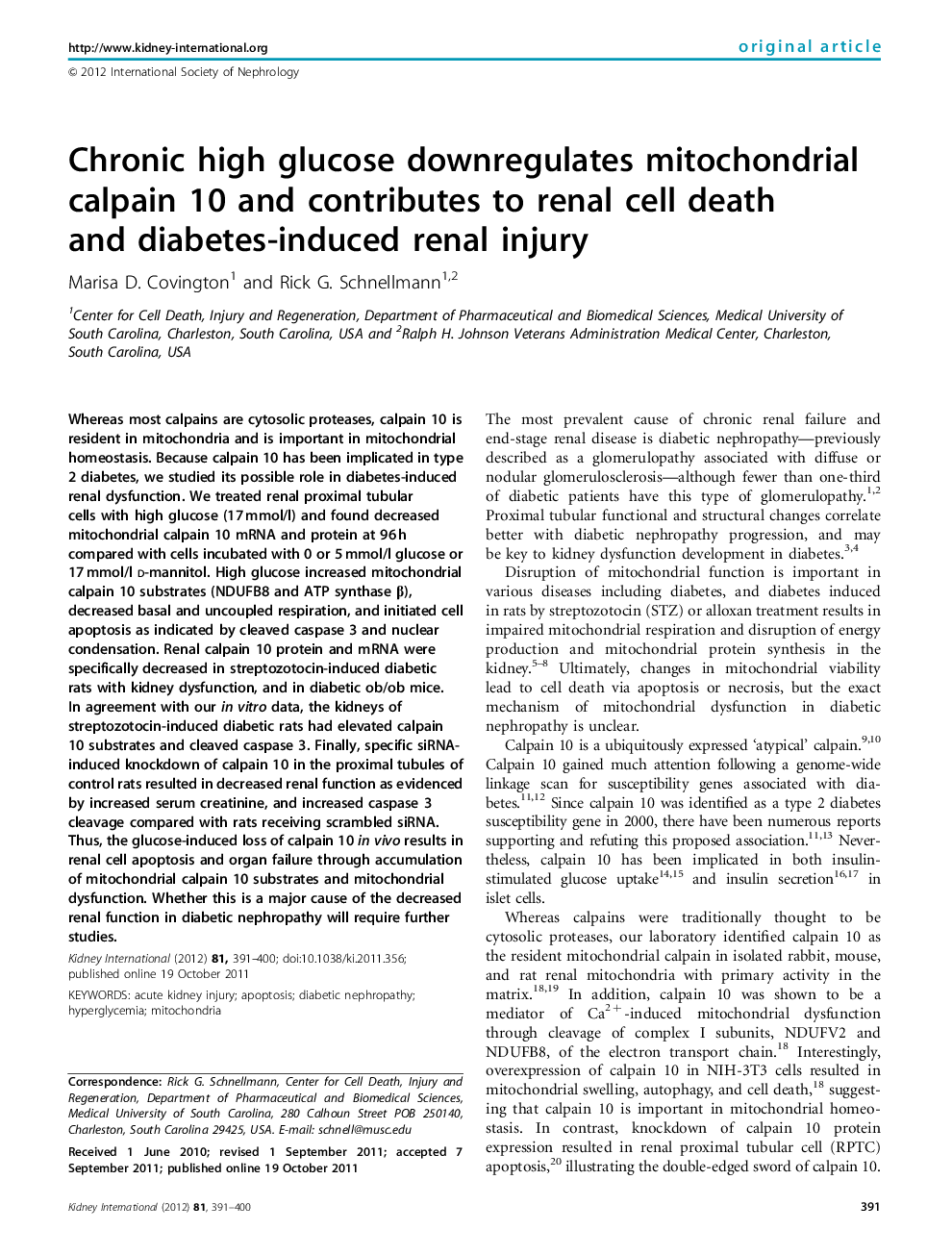| Article ID | Journal | Published Year | Pages | File Type |
|---|---|---|---|---|
| 3883562 | Kidney International | 2012 | 10 Pages |
Whereas most calpains are cytosolic proteases, calpain 10 is resident in mitochondria and is important in mitochondrial homeostasis. Because calpain 10 has been implicated in type 2 diabetes, we studied its possible role in diabetes-induced renal dysfunction. We treated renal proximal tubular cells with high glucose (17 mmol/l) and found decreased mitochondrial calpain 10 mRNA and protein at 96 h compared with cells incubated with 0 or 5 mmol/l glucose or 17 mmol/l D-mannitol. High glucose increased mitochondrial calpain 10 substrates (NDUFB8 and ATP synthase β), decreased basal and uncoupled respiration, and initiated cell apoptosis as indicated by cleaved caspase 3 and nuclear condensation. Renal calpain 10 protein and mRNA were specifically decreased in streptozotocin-induced diabetic rats with kidney dysfunction, and in diabetic ob/ob mice. In agreement with our in vitro data, the kidneys of streptozotocin-induced diabetic rats had elevated calpain 10 substrates and cleaved caspase 3. Finally, specific siRNA-induced knockdown of calpain 10 in the proximal tubules of control rats resulted in decreased renal function as evidenced by increased serum creatinine, and increased caspase 3 cleavage compared with rats receiving scrambled siRNA. Thus, the glucose-induced loss of calpain 10 in vivo results in renal cell apoptosis and organ failure through accumulation of mitochondrial calpain 10 substrates and mitochondrial dysfunction. Whether this is a major cause of the decreased renal function in diabetic nephropathy will require further studies.
